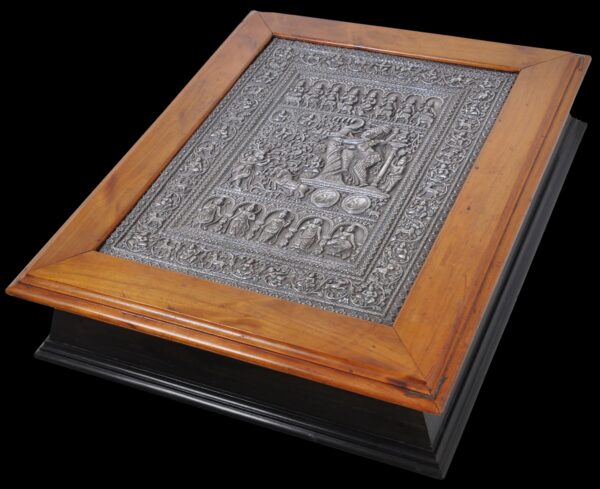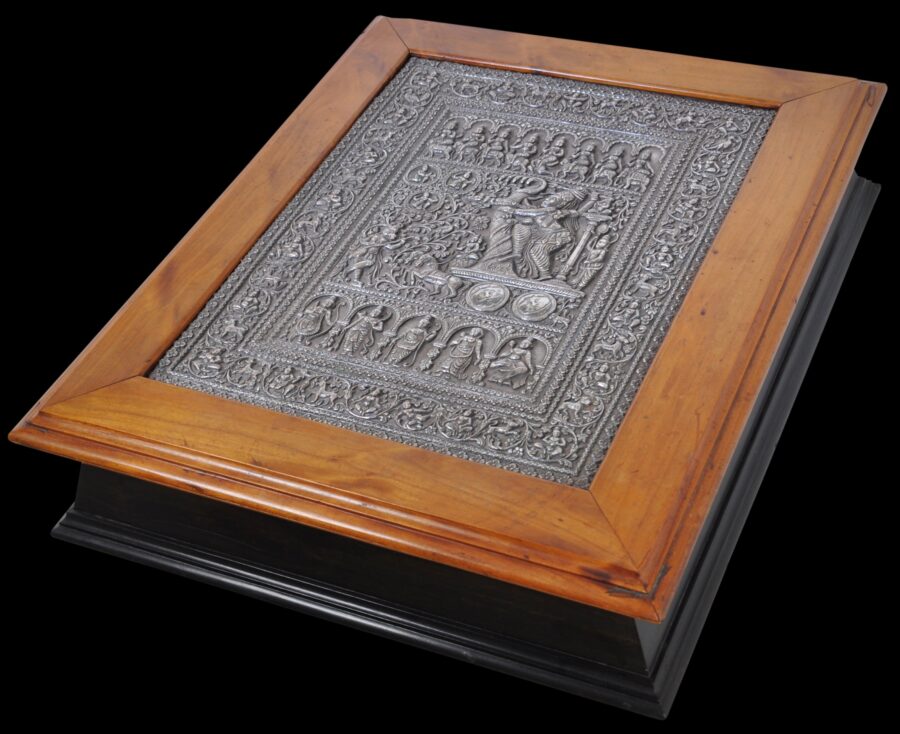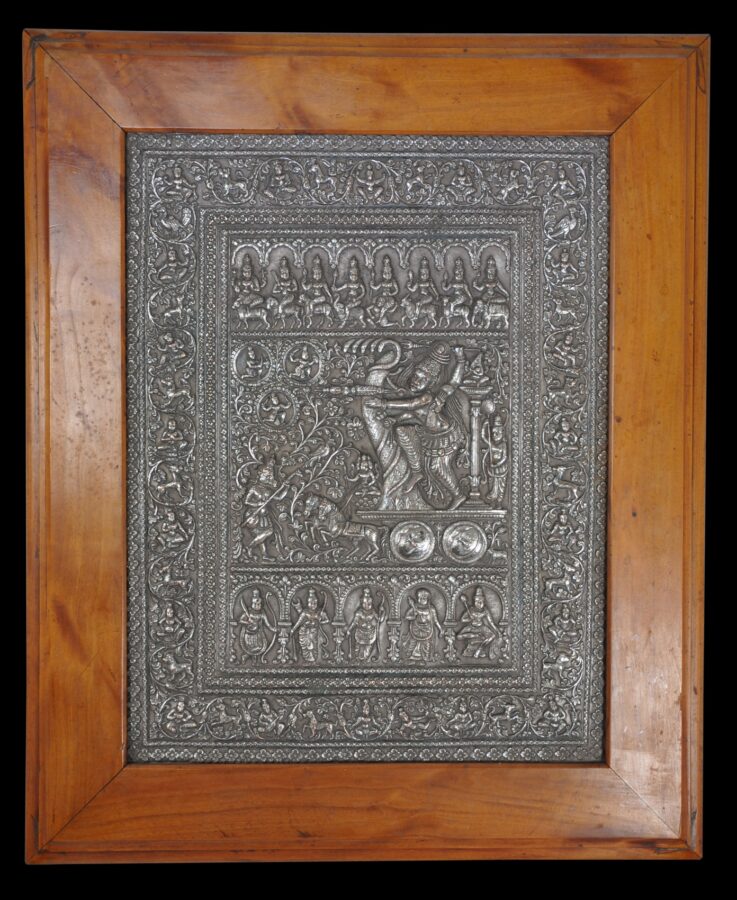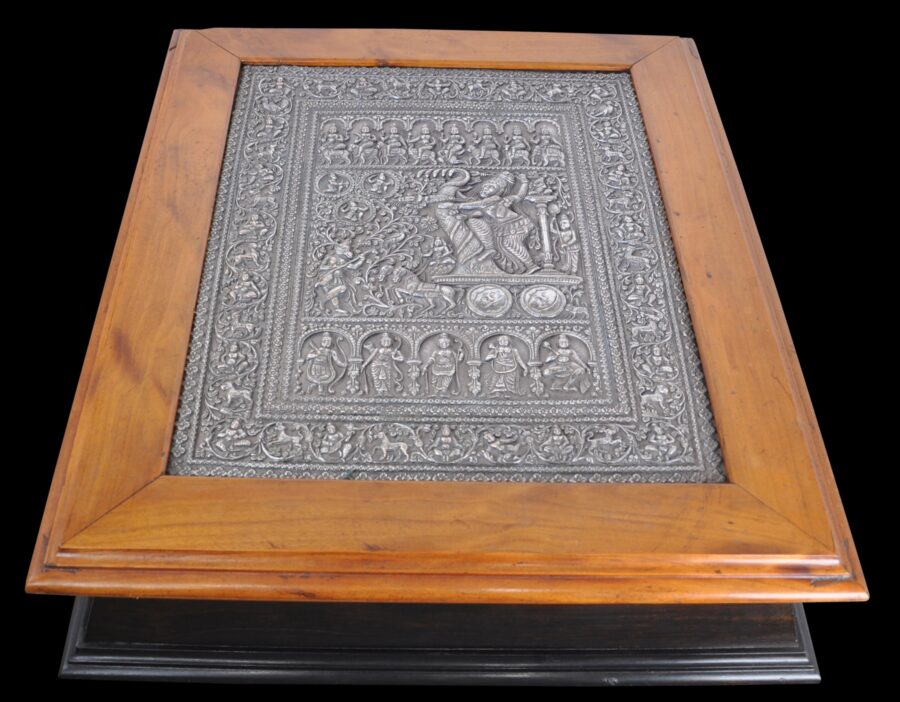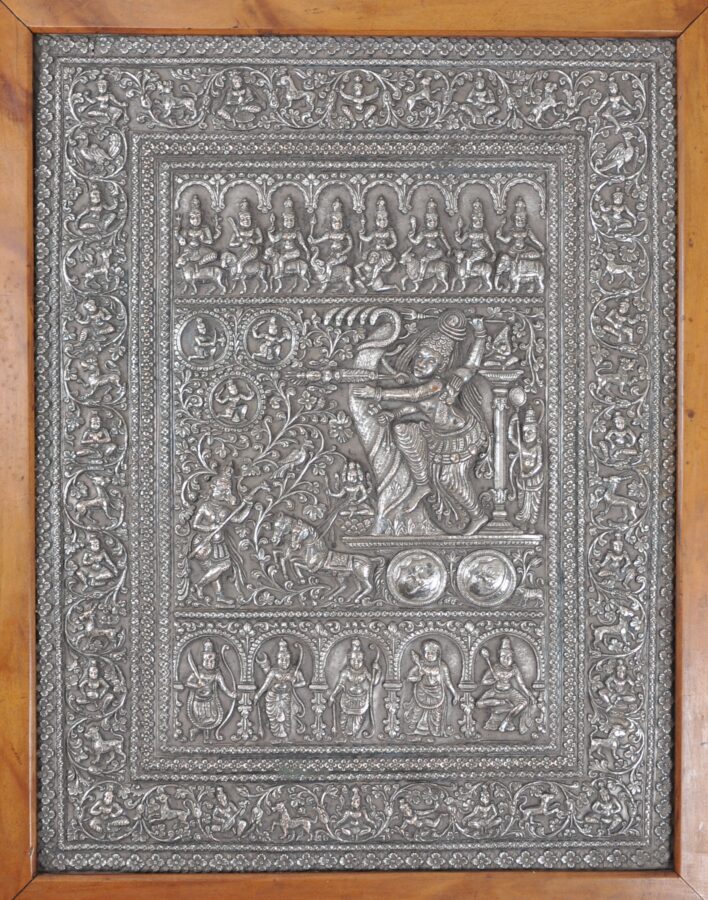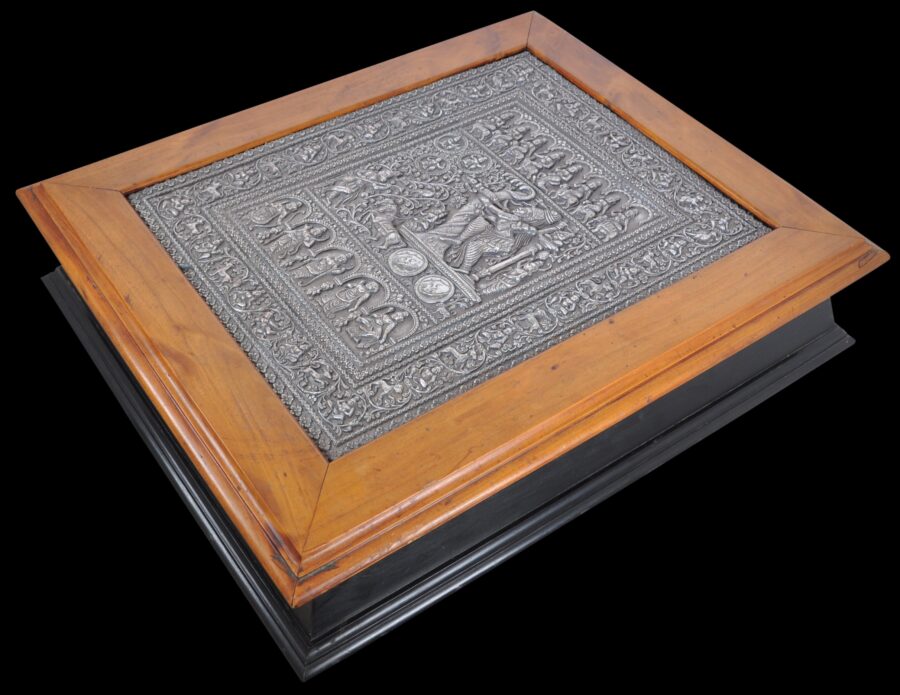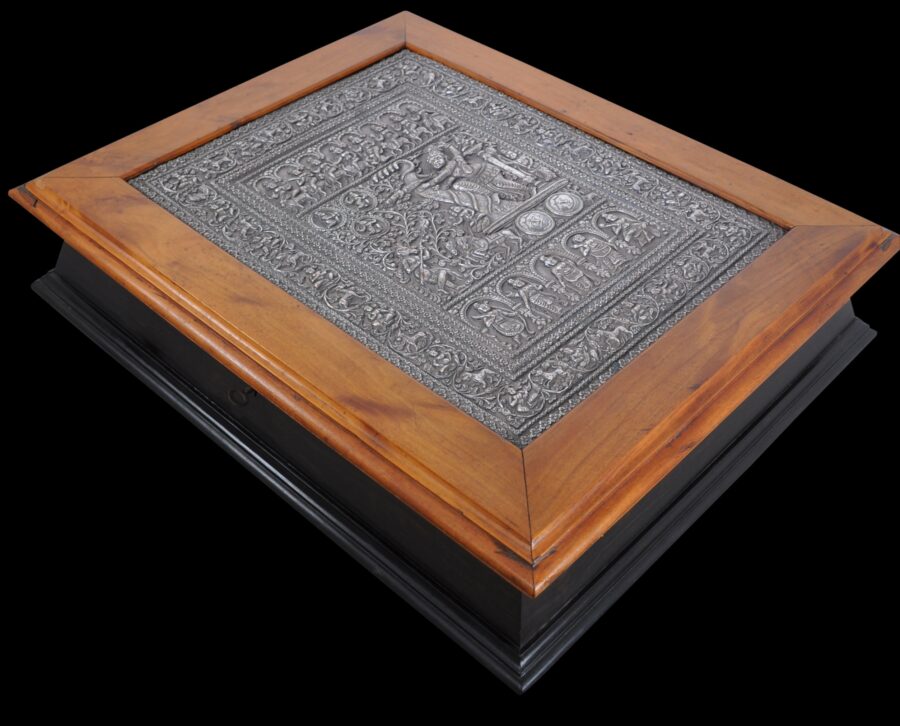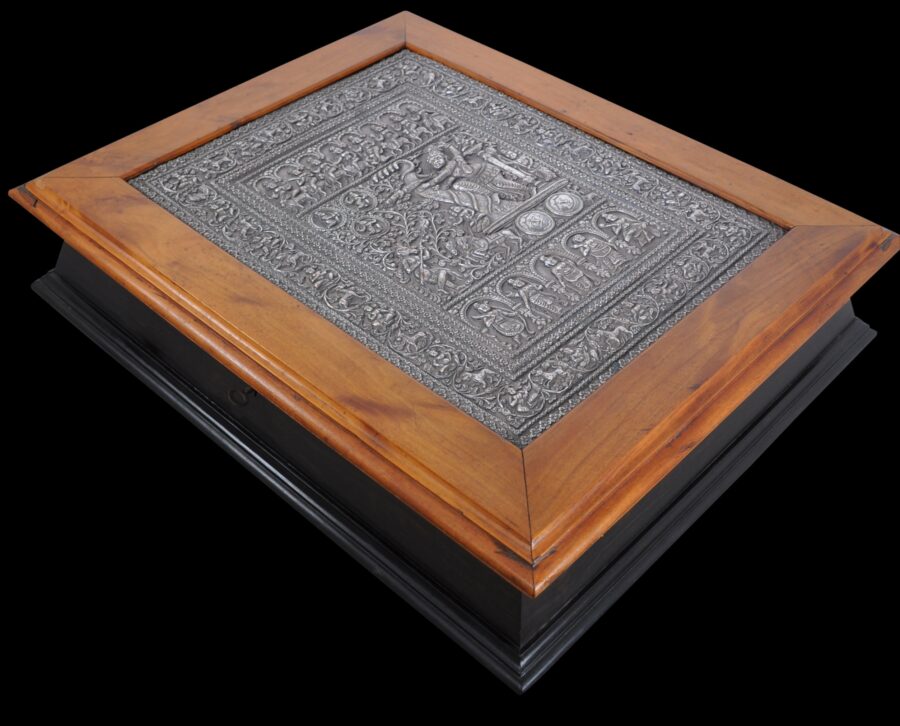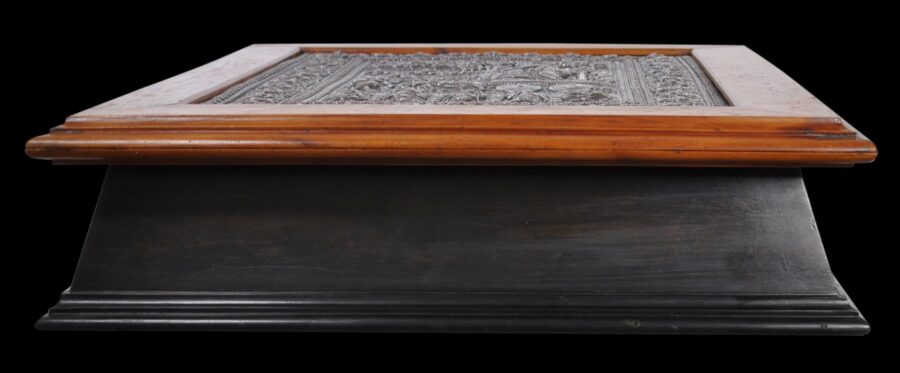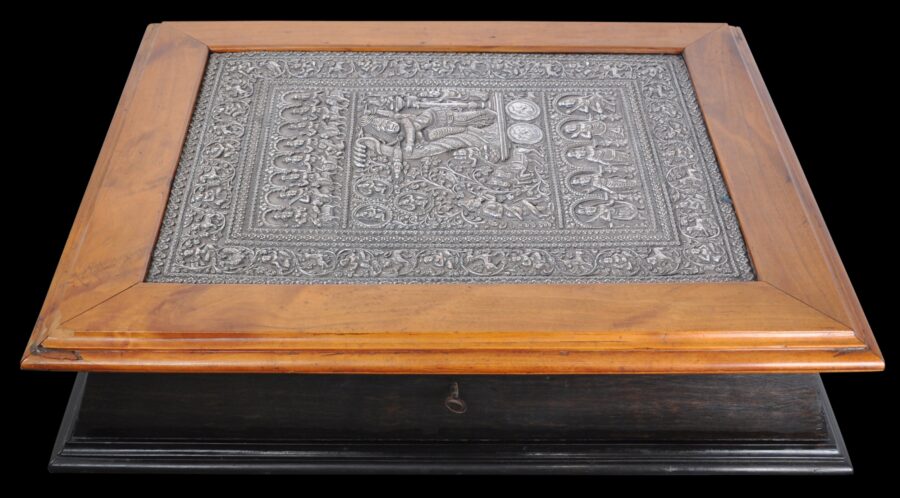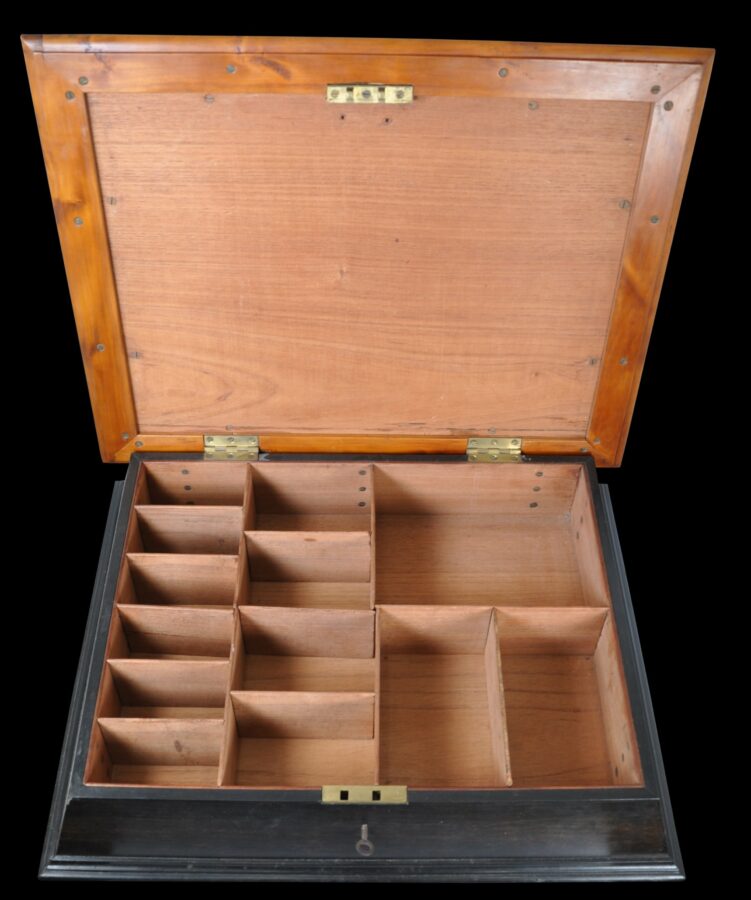This extraordinary box, from India’ south – probably Mysore – is of sandalwood and ebony. The interior has wooden segments which can be arranged to make compartments according to what it is that is to be stored. The hinged lid of the box is inset with a particularly intricate copper panel that has been heavily overlaid with silver. The panel has a Hindu religious scene. The box has a Chubb lock and key imported from England. The exterior sides of the box slope in, giving it a much more arcitectural feel, and yet the interior is lined so that the interior sides are perpendicular to the base.
Such a box almost certainly was used by a temple priest to keep his puja equipment, used for rituals and prayer.
The panel has been very finely repoussed and chased.
The panel reflects the following episode from the Hindu Vedas:
Tripura was the triple city of the Asuras – there was one each in heaven, earth and the underworld. One was of iron, one of silver, and one of gold. Indra could not vanquish them. So Shiva created for himself a chariot from the earth. The sun and moon became the chariot’s wheels. (This can be seen clearly in the panel.) Various deities were used in various ways: Brahma (with his multiple heads) was made the driver, Mandara was made a bow, Vishnu was made the arrow’s shaft and Agni, the arrow head. All of this can be seen in the relief here. Shiva is shown on the chariot and as the central figure in the panel, wielding a trident above his head. The chariot was intended to be used in the destruction of Tripura.
Just above this scene are seven representations of Shiva, each on a different vahana. With the central figure, this completes the eight manifestations of Shiva.
Surrounding this scene are elaborate borders of deities, animals and scrolling flowers and foliage.
The work on the panel evokes the fine sandalwood carving undertaken in the 19th century in India’s south. Mysore (along with Canara) specialised in fine sandalwood carving. The craftsmen were known as gudigars. They were hereditary artisans who are believed to have migrated originally from Goa in the early sixteenth century to avoid conversion to Christianity by the Portuguese. They settled in and around Mysore and developed a woodcarving technique so fine that it has few parallels in India.
Overall, this is a remarkable and rare box. It is in excellent condition – there is an old chip to one of the interior bevelled corners of the box (not an outer corner) and with the patina that this itself has developed, is barely noticeable.
References
Jaffer, A., Furniture from British India and Ceylon: A Catalogue of the Collections in the Victoria and Albert Museum and the Peabody Essex Museum, Timeless Books, 2001.


